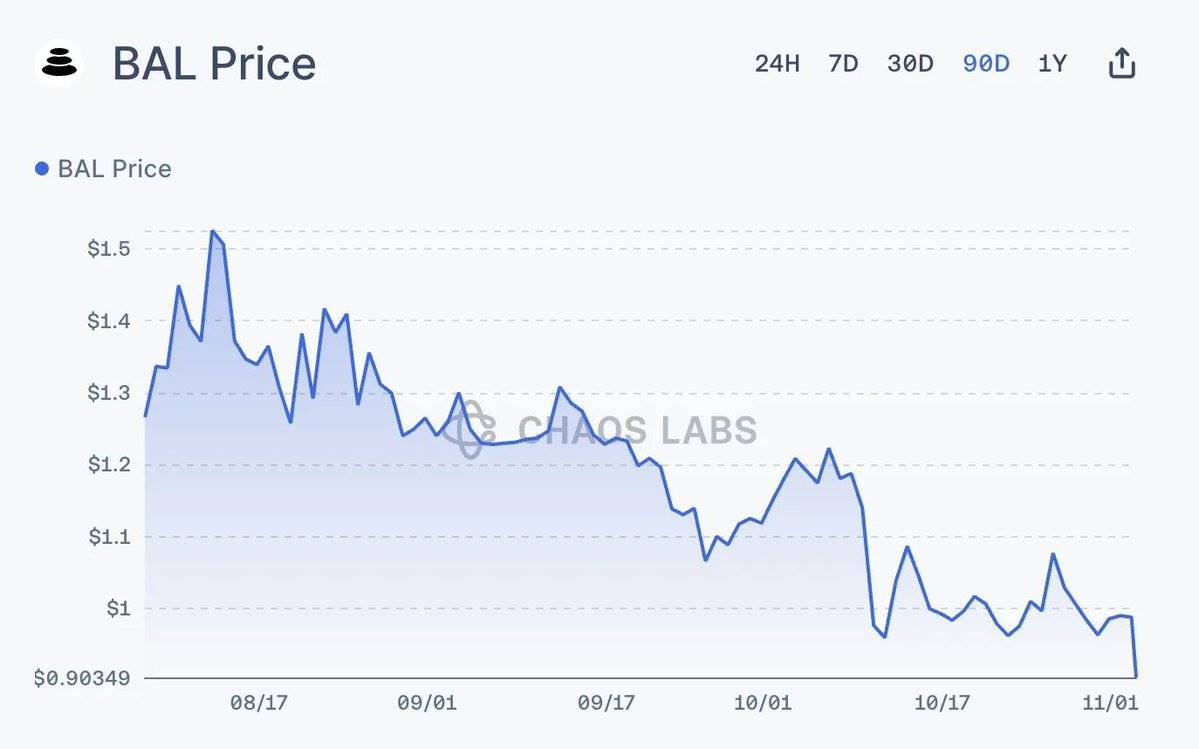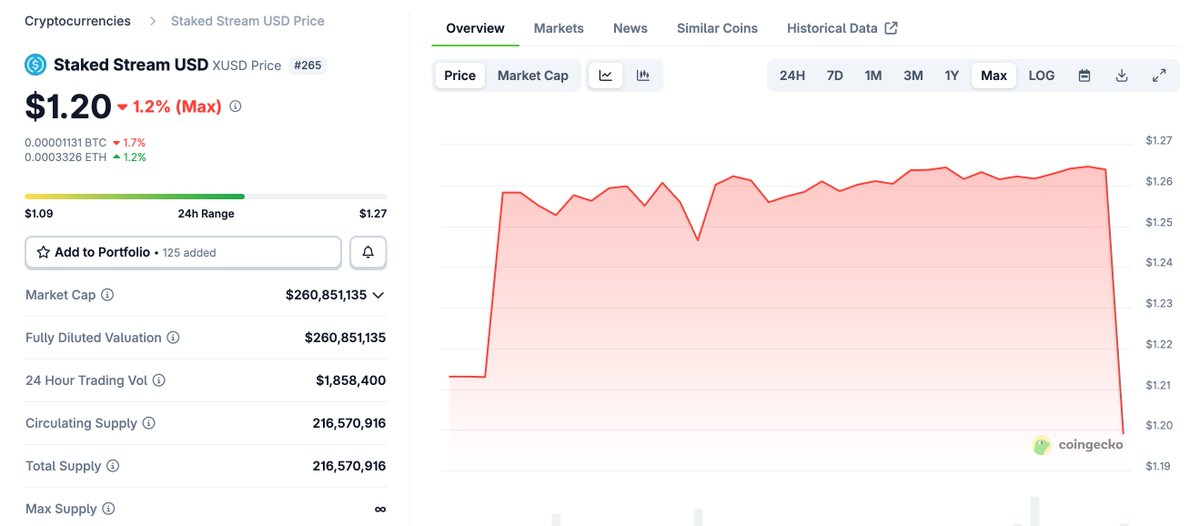Long-standing issues surrounding leverage, oracle construction, and PoR transparency have resurfaced.
Author: Omer Goldberg
Compiled by: Deep Tide TechFlow
Summary
Hours after the multi-chain platform @Balancer suffered a vulnerability attack, causing widespread uncertainty in the DeFi space, @berachain urgently executed a hard fork, and @SonicLabs froze the attacker’s wallet.
Subsequently, the price of Stream Finance's xUSD stablecoin significantly deviated from its target range, exhibiting a clear decoupling phenomenon.
Long-standing Issues Resurface
The long-standing controversies surrounding leverage operations, oracle construction, and Proof of Reserve (PoR) transparency have once again come to the forefront.
This is precisely the case of a typical "reflexive pressure event" we outlined in our article "The Black Box/Vault of DeFi" last Friday.

What Happened?/Background
The Balancer v2 vulnerability erupted across multiple chains, and for a considerable period, it was unclear which liquidity pools were affected and which networks or integrated protocols were directly exposed to risk.

Capital Panic in an Information Vacuum
In an information vacuum, capital's reaction is as predictable as ever: depositors rush to withdraw liquidity from any source they believe may be directly or indirectly affected, including Stream Finance.

Controversy Over Lack of Transparency
Stream Finance currently does not maintain a comprehensive transparency dashboard or Proof of Reserve; however, it provides a link to Debank Bundle to display its on-chain positions.
Nevertheless, after the vulnerability outbreak, these simple disclosures failed to clearly address the issue of risk exposure: the price of xUSD (Stream's yield-bearing dollar product) dropped from the target price of $1.26 to $1.15, and has since rebounded to $1.20, while users reported that withdrawals were suspended.

Risks and Controversies of Stream Finance
Stream is an on-chain capital allocation platform that utilizes user funds to operate high-yield, high-risk investment strategies.
The construction of its portfolio employs significant leverage, making the system more resilient under pressure. However, the protocol has recently come under public scrutiny due to controversies surrounding its recursive loop/minting mechanism.
While the current situation does not directly indicate a liquidity crisis, it reveals the market's heightened sensitivity. When negative news arises and confidence is questioned, the shift from "probably no problem" to "redeem immediately" can often be very rapid.
xUSD is used as collateral and is distributed across multiple chains in Curated Markets, including Euler, Morpho, and Silo, covering ecosystems such as Plasma, Arbitrum, and Plume.
The protocol itself has significant risk exposure in these markets, with the largest being $84 million USDT borrowed against xUSD on Plasma.

Collateral Mechanism and Risk Buffer
When the market price of xUSD falls below its book value, the related positions are not immediately liquidated. This is because many markets do not link the value of collateral to the spot AMM (automated market maker) price, but instead rely on hard-coded or "base value" feeds, which track reported asset support rather than current secondary market prices.
In calm periods, this design can mitigate tail risk liquidations caused by short-term volatility, especially in stable products. This is also one reason why DeFi protocols performed better than centralized platforms during the liquidation wave on October 10.
However, this design can also quickly turn price discovery into trust discovery: choosing base (or hard-coded) oracles requires thorough due diligence, including the authenticity, stability, and risk characteristics of the asset support.
In short, this mechanism is only applicable when there is comprehensive Proof of Reserve and the ability to complete redemptions within a reasonable time. Otherwise, the risk is that lenders or depositors may ultimately bear the consequences of bad debts.

Stress Testing on Arbitrum
Taking Arbitrum as an example, the current market price of the MEV Capital Curated xUSD Morpho Market has fallen below the LLTV (Lowest Loan-to-Value Ratio). If the pegged price of xUSD cannot recover, with utilization reaching 100% and borrowing rates soaring to 88%, the market may further deteriorate.
We do not oppose base oracles; on the contrary, they play a crucial role in preventing unfair liquidations caused by short-term volatility. Similarly, we do not oppose tokenized or even centralized yield-bearing assets. But we advocate that when deploying money markets around these assets, basic transparency must be achieved, and modern, systematic, and professional risk management must be adopted.
Curated Markets can become engines of responsible growth, but they must not devolve into a race sacrificing safety and rationality in pursuit of high yields.
If a "domino-like" complex structure is built, then one should not be surprised when it collapses at the first gust of wind. As the industry professionalizes and some yield products become structured (but potentially more opaque to end users), risk stakeholders must raise their standards.
While we hope to ultimately resolve the issues for affected users, this incident should serve as a wake-up call for the entire industry.
免责声明:本文章仅代表作者个人观点,不代表本平台的立场和观点。本文章仅供信息分享,不构成对任何人的任何投资建议。用户与作者之间的任何争议,与本平台无关。如网页中刊载的文章或图片涉及侵权,请提供相关的权利证明和身份证明发送邮件到support@aicoin.com,本平台相关工作人员将会进行核查。




